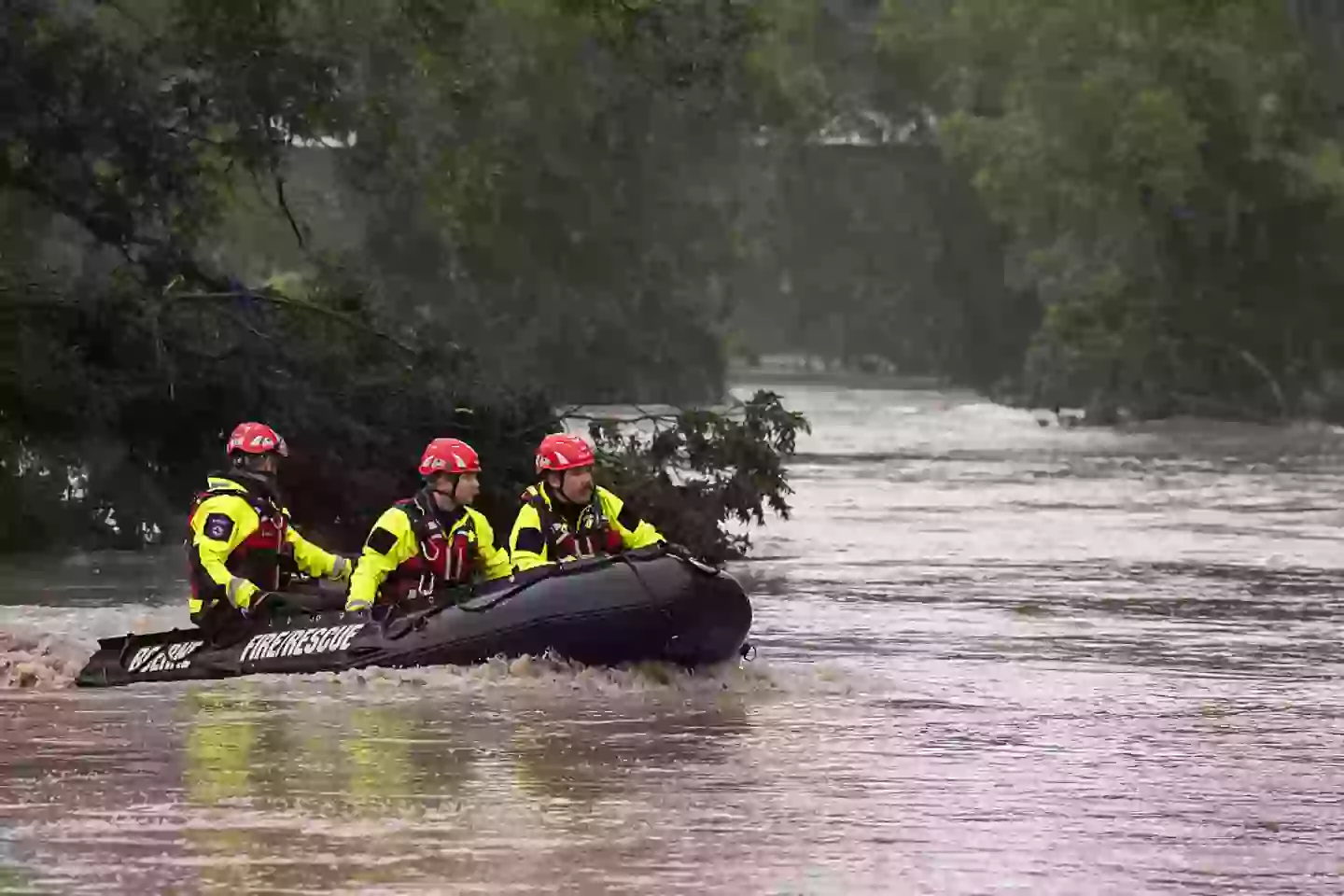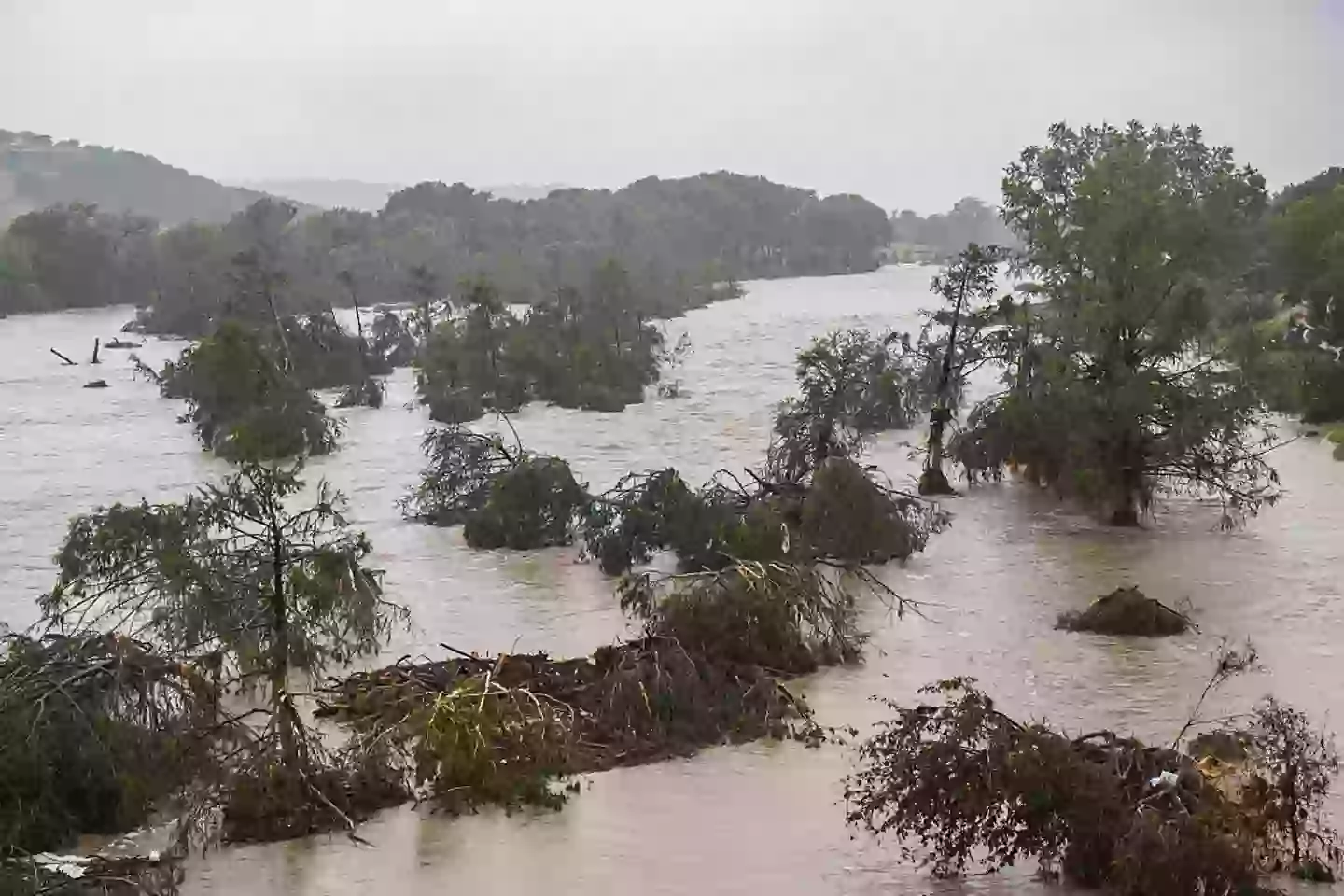“No Sound. No Warning. No Time.”: Texas Flash Flood Exposes Deadly Gaps as Search for Missing Campers Intensifies
The first sign of trouble wasn’t thunder—it was the silence. Before dawn on July 4th, something felt wrong along the Guadalupe River. Locals described an eerie stillness: not a single bird call, no breeze through the trees—just the kind of quiet that settles in right before everything changes.
By the time the rain began falling, there was no time left to act.

Within minutes, water surged down from both forks of the Guadalupe River, rising 26 feet in under an hour. The flash flood swallowed roads, cabins, and entire campsites, transforming a holiday into one of the deadliest weather disasters in Texas history.
As of today, at least 51 people have been confirmed dead, including 15 children, with over 20 campers still missing—many of them from Camp Mystic, a well-known girls’ summer camp just outside Kerrville.
Captured in Real Time: The Flood That Gave No Warning
In the chaos that followed, one video would come to symbolize just how sudden and unstoppable the flood was.
A now-viral time-lapse, filmed by a local resident, shows the transformation from peaceful creek to violent flood in a span of minutes. What begins as a shallow stream crossing turns, frame by frame, into a surging brown torrent. Trees are ripped out. Cars disappear. Roads vanish beneath the current.
The footage, now circulating widely on social media and news broadcasts, has stunned viewers with the speed of the disaster—and prompted hard questions about whether anyone could have been warned in time.
Campers Trapped, Families in Agony
For many, the center of the unfolding tragedy is Camp Mystic, where 750 young girls were spending their summer. The camp lost all communication—no phones, no internet, no power—leaving families in agonizing silence for hours. Some of the missing were last seen near the riverbank before the flood struck.
Among the first to be identified was 9-year-old Janie Hunt, whose mother confirmed her death to CNN. Her story has already become emblematic of the heartbreak families are enduring as they wait for answers, some still clinging to hope.
Lieutenant Governor Dan Patrick, while acknowledging the severity of the disaster, urged the public not to assume the worst for those unaccounted for.
“It’s possible many of the missing are simply out of contact due to damaged systems,” he said. “We’re not giving up on anyone.”
How It Happened: A Perfect Storm Over Two Forks
Experts say the flood’s intensity came from a rare and dangerous convergence: torrential rain falling simultaneously over both the north and south forks of the Guadalupe River.
City Manager Dalton Rice explained that the south fork surged from seven to nearly 29 feet in just minutes. Normally, water rises in one part of the system, giving communities downstream time to respond. This time, there was no such buffer.
“It was like getting hit from two directions at once,” said Rice. “It overwhelmed everything.”
This kind of storm, he noted, was “not part of the models we’re used to.”

Emergency Response Stretched to Its Limits
Hundreds of emergency responders have descended on Kerr County, aided by federal teams, state troopers, and search-and-rescue units. Governor Greg Abbott has extended a state of emergency and requested federal disaster assistance.
The scale of the operation is daunting: shattered roads, collapsed bridges, isolated communities, and an unstable landscape that continues to shift under threat of more rain.
The National Weather Service has maintained flood watches across the region, warning that further rainfall could slow recovery efforts or trigger new flash events.
Anger Over Warnings That Never Came
As the community reels, frustration is growing over missed warnings—or the complete lack of them. Residents and experts alike are pointing to the reduced capacity of the National Weather Service’s alert infrastructure, which had previously faced budget cuts and system downgrades.
“This flood moved fast, yes—but not faster than radar,” said one former NOAA forecaster. “People died because they didn’t know. And they could have.”
What Comes Next
In the days ahead, Kerr County faces a massive recovery effort. Homes have been destroyed. Lives have been upended. And an entire community is grieving—and asking how this happened in a state so prone to extreme weather.
Judge Rob Kelly, who leads Kerr County’s emergency coordination, was candid:
“This storm outpaced our systems, our expectations, and our capacity to warn people. But that’s not a reason to throw up our hands. It’s a reason to build better.”
Conclusion: A Reckoning in the Flood’s Wake
As rescue teams press forward and families search for closure, the legacy of this disaster is still unfolding. The time-lapse video has offered terrifying clarity: sometimes nature moves too quickly for the systems we’ve built to keep up. But the tragedy has also revealed something else—a gaping need to modernize, prepare, and stop gambling with time we don’t have in a changing climate.
What happened in Kerrville wasn’t just a freak storm. It was a warning shot.
And next time, the question will be: Did we listen?
